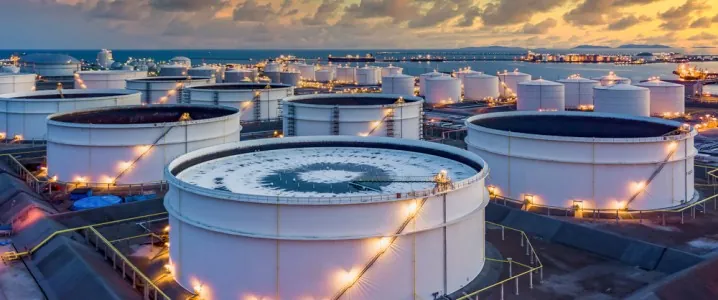
Groundbreaking Discovery Captures Hydrogen and Oxygen Forming Water at Nanoscale!
2024-10-01
Groundbreaking Discovery Captures Hydrogen and Oxygen Forming Water at Nanoscale!
Researchers have achieved a remarkable milestone in the scientific community by filming the fusion of hydrogen and oxygen molecules to create tiny water bubbles at the nanoscale for the very first time. This unprecedented achievement comes from a dedicated team at Northwestern University, Illinois, who have developed a cutting-edge method that allows for real-time observation and analysis of gas molecules.
Innovative Technique Designed in 2024
In 2024, the researchers designed a sophisticated technique that involves trapping gas molecules in honeycomb-shaped nanoreactors, utilizing ultra-thin glass membranes. This innovative setup enables them to visualize the reactions with incredible clarity through high-vacuum transmission electron microscopes.
Unraveling a Scientific Enigma
The team focused on unraveling a century-old scientific enigma: the rapid production of water from hydrogen and oxygen using the rare metal palladium. As stated by Yukun Liu, the first author of the study, “This phenomenon has been known, but the underlying mechanisms were never fully comprehended. Our new method combines direct observation of the water generation process with atomic-scale structural analysis, crucial for understanding the reaction dynamics and optimizing conditions.”
Revolutionary Observation of Water Bubbles
During their experiments, the researchers watched in amazement as hydrogen diffused into the palladium, creating what may be the smallest water bubble ever visualized directly. Liu mentioned, “We think it might be the smallest bubble ever formed and observed. It was astonishing, and fortunate we recorded it to validate our findings.”
Advanced Techniques for Analysis
Not stopping at visual evidence, the team employed electron energy loss spectroscopy to analyze the water bubble, a technique previously used by India’s Chandrayaan-1 mission to confirm water presence on the Moon—but now adapted for nanoscale observation.
Implications for Practical Applications
These groundbreaking findings have significant implications for practical applications, particularly in challenging environments such as space. Vinayak Dravid, the senior author of the study, stated, “The ability to visualize nanoscale water generation allowed us to determine optimal conditions for efficient water production under ambient conditions.” This could pave the way for generating water in deep space simply by using gases and metal catalysts, eliminating the need for extreme reaction environments.
Potential Methods for Astronauts
Particularly relevant for future space missions, the research offers potential methods for astronauts to produce drinkable water. For example, if palladium were pre-charged with hydrogen, astronauts could merely add oxygen to generate fresh water, a critical resource on extended space voyages or while establishing bases on other planets.
Comparing to *The Martian*
Dravid drew parallels to the movie *The Martian*, where Matt Damon’s character, Mark Watney, ingeniously produces water by burning rocket fuel. 'Our technique is similar, but we've completely eliminated the need for fire or extreme conditions,' he explained. 'Instead, we simply mix palladium with the necessary gases.'
Future Innovations and Conclusions
The remarkable insights from this research not only deepen our understanding of chemical processes but also hold promise for innovations in resource-generation technologies—both on Earth and beyond. Scientists and space enthusiasts alike are eager to see how this groundbreaking work will shape the future of water production and its implications for space exploration.









 Brasil (PT)
Brasil (PT)
 Canada (EN)
Canada (EN)
 Chile (ES)
Chile (ES)
 España (ES)
España (ES)
 France (FR)
France (FR)
 Hong Kong (EN)
Hong Kong (EN)
 Italia (IT)
Italia (IT)
 日本 (JA)
日本 (JA)
 Magyarország (HU)
Magyarország (HU)
 Norge (NO)
Norge (NO)
 Polska (PL)
Polska (PL)
 Schweiz (DE)
Schweiz (DE)
 Singapore (EN)
Singapore (EN)
 Sverige (SV)
Sverige (SV)
 Suomi (FI)
Suomi (FI)
 Türkiye (TR)
Türkiye (TR)